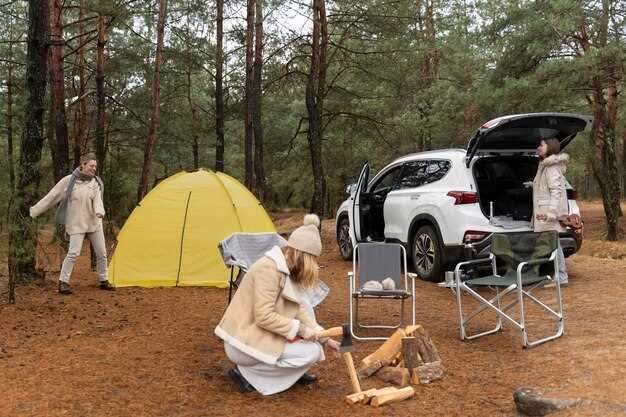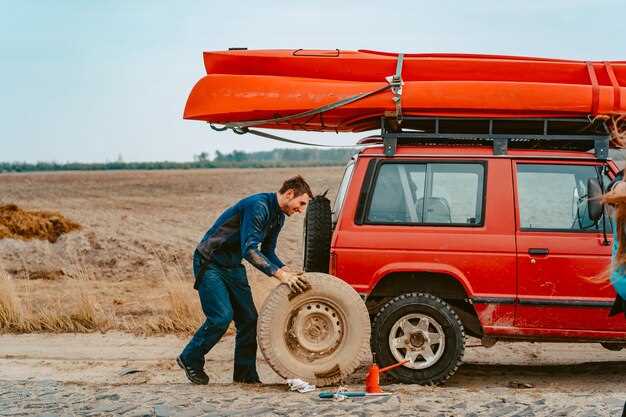
In today’s world of exploration and adventure, overlanding has gained significant popularity among outdoor enthusiasts. This unique form of travel combines off-road driving with camping, allowing individuals to immerse themselves in nature while experiencing the thrill of navigating challenging terrains. With a growing market of specialized vehicles designed for this purpose, choosing the right one can be a daunting task.
This article aims to highlight the best five overlanding vehicles available right now, focusing on their capabilities, features, and overall suitability for long-distance travel. Whether you seek rugged durability or modern comforts, these vehicles have been selected for their performance and reliability in diverse environments.
When considering an overlanding vehicle, factors such as fuel efficiency, storage capacity, and off-road capabilities are paramount. As we delve into this list, you’ll discover a range of options that cater to various preferences and budgets, ensuring that your next adventure can be as exhilarating and comfortable as possible. Join us as we explore the top contenders in the overlanding vehicle market today.
Top Features to Look for in an Overlanding Vehicle

When selecting an overlanding vehicle, durability and build quality are paramount. The vehicle should be constructed to withstand harsh conditions, including rough terrains and extreme weather. Steel or reinforced composite body materials can enhance longevity and resistance to damage.
Four-wheel drive (4WD) capability is essential for off-road performance. This feature ensures optimal traction and stability on uneven surfaces, allowing for navigation through mud, sand, and rocky paths. Look for vehicles that offer low-range gearing for better handling on steep inclines and declines.
Ground clearance plays a crucial role in preventing damage from obstacles like rocks and fallen branches. A vehicle with a higher ground clearance enhances off-road capability, allowing for easy traversal over difficult terrain while maintaining a comfortable approach and departure angle.
Another important feature is the vehicle’s fuel capacity and efficiency. Overlanding often involves long distances between refueling points. Therefore, a larger fuel tank combined with an efficient engine can significantly extend your travel range, reducing the need for frequent stops.
Storage and cargo capacity are vital for carrying all necessary gear, supplies, and equipment. Choose a vehicle that offers ample storage solutions, including roof racks, ample cabin space, and options for towing trailers or off-road campers.
Comfort and interior layout should not be overlooked. Long journeys require comfortable seating and a functional space for passengers and gear. Configurable interiors that facilitate easy movement and organization can enhance the overall experience during extended trips.
Finally, ensure that the vehicle is equipped with modern navigation and communication tools. A reliable GPS system, along with off-road maps and the ability to connect with emergency services, is important for safety and navigation in remote areas. Features like satellite communication can also provide peace of mind when traveling far from civilization.
Comparative Analysis of Popular Overlanding Models

When evaluating the best overlanding vehicles, several models stand out due to their performance, durability, and off-road capabilities. This analysis will compare five popular options: Toyota 4Runner, Jeep Wrangler, Land Rover Defender, Ford Bronco, and Subaru Outback, focusing on their strengths and weaknesses.
The Toyota 4Runner is renowned for its reliability and off-road proficiency. It features a robust body-on-frame construction, making it well-suited for rugged terrain. With generous ground clearance and optional four-wheel drive, it handles challenging trails effectively. However, its fuel economy is less impressive compared to competitors, which may deter some buyers.
The Jeep Wrangler is synonymous with off-roading. Its iconic design is complemented by exceptional articulation, reinforced axles, and various customizability options. The Wrangler’s availability of removable doors and roof enhances the adventure experience. Nonetheless, its on-road performance and interior comfort may not match those of other models, potentially limiting its appeal for long-distance travel.
The Land Rover Defender is a blend of luxury and off-road capability. It boasts advanced technology, a sophisticated traction management system, and a spacious, adaptable interior. Its all-terrain performance is exceptional, thanks to features like Terrain Response. Conversely, the high purchase price and potential maintenance costs may be a concern for budget-conscious overlanders.
The Ford Bronco has made a significant comeback, offering robust off-road features and retro styling. Its modular design allows for extensive modifications, and it comes with advanced off-road driving modes. The Bronco’s comfortable interior and technology features are appealing for extended journeys. However, its availability can be limited due to high demand, and initial production issues have been reported.
Lastly, the Subaru Outback is a crossover option that appeals to those seeking versatility and comfort. With standard all-wheel drive and a lower center of gravity, it excels in various conditions. Its fuel efficiency is superior, making it ideal for long trips. Nevertheless, it may lack the extreme off-road capabilities needed for more challenging terrains, which could limit its use as a dedicated overlanding vehicle.
In conclusion, each of these vehicles offers unique attributes that cater to different overlanding preferences. The choice ultimately depends on the specific needs and priorities of the adventurer, whether it’s rugged capability, comfort, or fuel efficiency.
Cost vs Value: Making the Right Purchase Decision
When considering an overlanding vehicle, it’s essential to evaluate the cost against the value it brings to your adventures. The initial price tag of a vehicle often overshadows the long-term benefits it offers, which can substantially influence your overall experience.
Firstly, the upfront cost includes not only the purchase price but also taxes, fees, and potential modifications required for off-road capabilities. It’s crucial to account for these expenses when budgeting. However, the value of an overlanding vehicle lies in its durability, versatility, and capability. Investing in a vehicle known for reliability and off-road performance can save you money on repairs and upgrades in the long run.
Next, fuel efficiency plays a significant role in the overall cost of ownership. While a rugged truck may come at a lower price, if its fuel consumption is high, you may find yourself spending significantly more during long trips. Balancing initial cost with fuel efficiency and maintenance needs will contribute to making an informed decision.
Moreover, consider the accessories and modifications you might need to adapt your vehicle for overlanding. High-quality aftermarket equipment can enhance functionality but may also increase your total expenditure. Evaluating whether these enhancements provide legitimate returns in terms of performance and comfort is crucial.
Lastly, the resale value should not be underestimated. Some vehicles retain their value better than others. A higher initial expenditure on a popular and reliable model could lead to better resale potential, providing a financial cushion when it’s time to upgrade.
Ultimately, evaluating cost versus value is about understanding your specific overlanding needs and how a vehicle aligns with them. A thoughtful approach ensures that your investment pays off in memorable adventures and reliability on the road less traveled.

